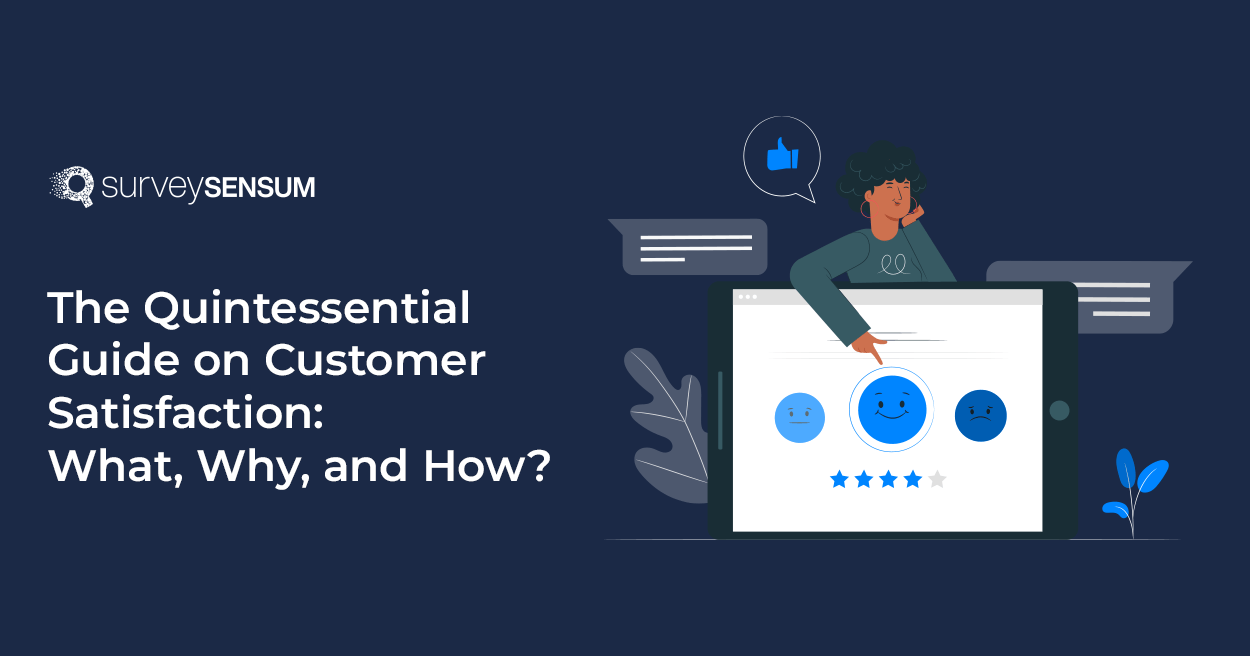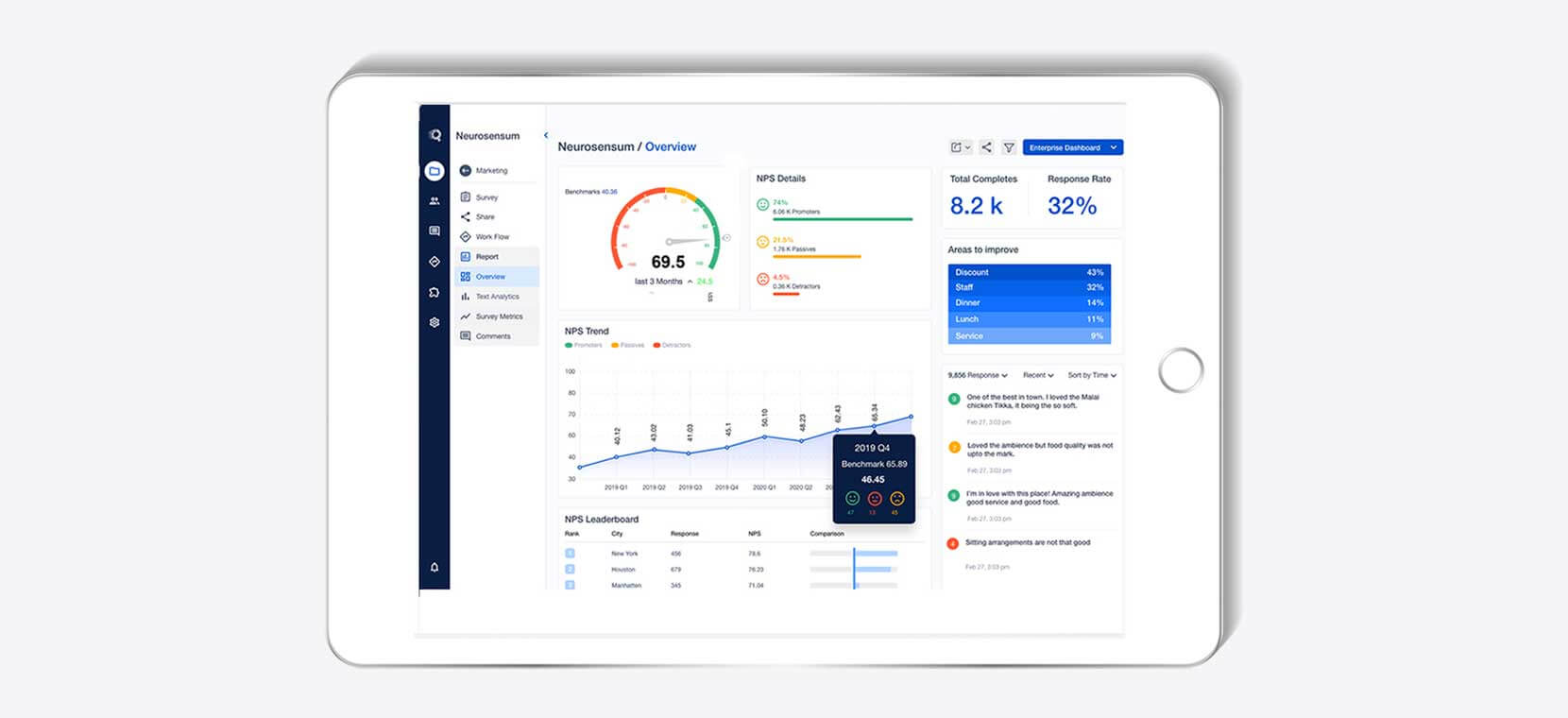
Ever wondered how companies like Amazon and IKEA keep track of thousands of their customer interactions especially those who are at churn?
By prioritizing customer satisfaction.
And not just Amazon, in fact, more than 80% of customer service businesses use customer satisfaction scores as the primary metric for gauging the customer’s experience.
At its essence, the customer satisfaction metric measures the level of contentment or fulfillment experienced by customers following their interactions with a business, its products, or its services.
So, are you keeping an eye on your customer satisfaction levels?
If not, then let me tell you what you are missing on and how you can leverage this crucial metric to improve your performance.
Let’s start with the customer satisfaction definition.
What is Customer Satisfaction?
Customer satisfaction is the key to unlocking success in your business. It’s all about ensuring that your customers are not just happy, but thrilled with their experience when doing business with you. It’s about going above and beyond their expectations.
For example, let’s say you own an online store that sells clothes. Here, customer satisfaction means that when people buy from your store, they feel really happy with their purchase. They love high-quality clothes that meet their expectations. The ordering process is seamless, and your helpful customer support team is available to help your customers. When all of these elements align, your customers will be truly satisfied with their shopping experience.
To effectively gauge and evaluate customer satisfaction, use the customer satisfaction score (CSAT) – a standardized way to measure and assess customer satisfaction levels.
But is it really necessary to measure customer satisfaction scores?
Hell, yes!
The Importance of Measuring Customer Satisfaction
Here are the 5 benefits of measuring customer satisfaction, let’s explore each one in detail:
1. It Drives Revenue Growth
Satisfied customers are more likely to continue doing business with a company over time and these repeat customers tend to spend more. This leads to a boost in revenue growth.
According to Harvard Business Review, increasing customer retention rates by just 5% can lead to an increase in profits ranging from 25% to 95%. This is because the cost of acquiring new customers far exceeds that of retaining existing ones.
2. It Facilitates Word-of-Mouth Marketing
When you buy a great product or bad one, do you keep quiet or talk about it to your friends and family?
On average, satisfied customers tell nine other people about their positive experiences.
This shows that satisfied customers not only become repeat customers themselves but also act as brand advocates, recommending products or services to others. These positive word-of-mouth referrals can significantly boost a company’s reputation and customer acquisition efforts.
3. It Reflects Your Team’s Performance
Customer satisfaction not only tells you about the satisfaction levels of your customers but also sheds light on your team’s performance in regard to customer experience. KPIs such as response time, resolution time, and customer effort to resolve say a lot about your team’s performance and engagement.
4. It Increases Customer Lifetime Value
Did you know that 75% of customers are willing to spend more to buy from companies that give them a good customer experience?
Satisfied customers are more likely to remain loyal to a brand over time, resulting in a higher customer lifetime value. By focusing on improving customer satisfaction, businesses can enhance customer loyalty, leading to longer relationships and increased CLV.
Now the question that arises here is – ‘Is it only about delighting your customers?’
Let’s have a look at it.
Drawing the Fine Line: Customer Delight vs Business
Have you ever wondered how important it is for companies to “delight” their customers?
Well, it turns out that the idea of going above and beyond to provide exceptional service might not be as crucial as we think. In fact, most customers are more likely to stick around if a company simply delivers on its basic promises and provides reliable, consistent service.
Bad service tends to drive customers away, while exceptional service doesn’t always guarantee loyalty. This is especially true in phone-based and self-service interactions, which happen to be the primary customer service channels for most companies. Loyalty is directly tied to how well companies fulfill their basic promises rather than how dazzling the service experience might be.
Yet, many companies fail to realize this, resulting in wasted investments and lost customers. So, instead of chasing grand gestures, companies should focus on meeting customers’ fundamental expectations and resolving issues promptly. Consistency and reliability are the keys to winning customer loyalty.
Research by Harvard Business Review, Stop Trying to Delight Your Customers, suggests that the primary driver of satisfaction is reducing customer effort. To enhance satisfaction and loyalty while minimizing costs, companies must prioritize making interactions effortless.
Remember, simplicity and ease of use are key ingredients in creating satisfied and loyal customers.
Want to launch Customer Satisfaction Surveys but don’t know how to? Fret not! With SurveySensum’s industry-specific survey templates you don’t have to start from scratch and can design surveys in under 5 minutes!
5 KPIs Defining How to Measure Customer Satisfaction?
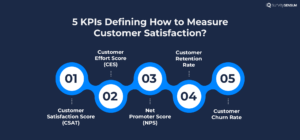
There are 5 KPIs with which you can measure customer satisfaction:
1. Customer Satisfaction Score (CSAT)

Customer satisfaction score is a measurement of how satisfied your customers are with your products, services, and overall satisfaction with your business. You can create and launch the CSAT survey at multiple touchpoints in the customer journey like post-shopping, etc. to gauge their satisfaction experience.
But why should you use it?
The CSAT score basically tells you the customer’s satisfaction level with your products, services, support, and overall business performance. The purpose of a customer satisfaction survey is to help you make data-driven decisions to improve customer satisfaction and overall experience.
Now comes a question – What to ask in CSAT surveys?
You just have to ask 1 question on either a Likert scale or a 1-5, or 1-7 point scale from your customers – How satisfied are you with your recent shopping experience?
And after this question, add an open-ended question asking – What was the reason behind the given score?
You can customize the CSAT survey question based on customers’ touchpoints. After customizing the surveys you can calculate the CSAT score to analyze the gathered feedback.
→ Read more on the journey-based CSAT survey.
2. Customer Effort Score (CES)

CES is a measurement of how much effort your customers are putting into either resolving an issue or completing a task with your business. This survey asks them to rate their experience based on the ease or difficulty they encountered using your services.
But why only CES?
Because CES helps you to assess customer satisfaction by focusing on the ease of the customer experience. And the lower your CES score, the higher the customer satisfaction and customer loyalty.
Here are a few CES questions to ask in your next survey:
In this survey, you just have to ask your customers a simple question – On a scale of 1 to 5, how easy was it to resolve your issue with our customer support? on a rating scale from ‘very easy to difficult’.
Note: The average score is calculated to determine the CES. Lower scores indicate higher customer satisfaction.
3. Net Promoter Score (NPS)

Net Promoter Score (NPS) is a metric that businesses use to measure customer loyalty by asking them how likely they are to recommend our brand to their friends, over a period of time. The respondents who fill out this survey are categorized into 3 categories based on their scores:
- Promoters – giving scores 9-10
- Passives – giving scores 7-8
- Detractors – giving scores 0-6
Why use NPS?
Because
- It is the best metric to gauge customer loyalty.
- It bifurcates your respondents, helping you leverage them accordingly.
For example, you can ask your promoters to spread good word of mouth and talk to detractors to identify areas of improvement. - It is a relationship metric that helps you build a relationship with your customers and informs you about the one thing that is stopping them from becoming your loyal customers.
So, what questions should you ask your customers while sending NPS surveys?
Ask them – On a scale of 0 to 10, how likely are you to recommend our company to a friend or colleague?
With the response to this NPS question, you’ll be able to know how many customers are loyal to you and how likely they recommend you to their friends and colleagues.
Launch NPS, CSAT, and CES surveys in under 5 minutes with SurveySensum’s survey templates and improve your overall customer satisfaction effectively.
4. Customer Retention Rate
Did you know how SurveySensum retained 98% of customers?
How?- By measuring Customer Retention rate.
Customer Retention Rate is the percentage of customers that your company retains over a specific period.
How to calculate it?
You can calculate the customer retention rate by collating all the active customers at the end of the period and subtracting it from the new customers acquired during the period, then dividing it by the active customers at the end of the period, and then multiplying it by 100.
By calculating the customer retention rate, you can assess customer loyalty and the effectiveness of retention strategies.
For instance, if you had 500 customers at the beginning of the year and by the end of the year, 450 customers remained.
Your customer retention rate would be (450/500) * 100 = 90%.
Suggested Read: How to Improve Customer Retention with NPS Surveys?
5. Customer Churn Rate
On average, it can cost you $243 to lose a customer – HubSpot
You don’t want that, right?
Customer churn rate measures the percentage of customers who leave a company over a specific period. It indicates customer attrition and dissatisfaction.
How to calculate it?
Calculate the churn rate by dividing the number of lost customers during a specific period by the number of customers at the start, then multiply by 100 to get the percentage.
For example, if you have 1000 customers at the beginning of the month and during the month, 50 customers cancel their subscriptions. The churn rate would be (50/1000) x 100 = 5%.
With these 5 KPIs, you can measure your customer satisfaction.
Do you know there are 6 types of customer satisfaction surveys that you can use to ace your business?
Here you go.
Don’t just get stuck with one, launch different types of customer satisfaction surveys with SurveySensum’s survey templates with pre-loaded survey questions and customizable options!
Types of Customer Satisfaction Surveys
A good way to gauge customer satisfaction is through these 6 types of surveys.
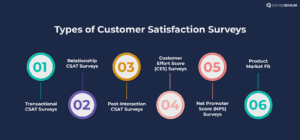
Following are the 6 kinds of customer satisfaction surveys that you can use:
What is a Customer Satisfaction Survey?
A customer satisfaction survey is a structured questionnaire designed to measure customers’ perceptions, opinions, and satisfaction levels regarding their experience with a product, service, or brand. These surveys are commonly used by businesses to gather feedback from their customers, understand their needs and preferences, and identify areas for improvement.
1. Transactional CSAT Surveys

These CSAT surveys are conducted after specific customer interactions, such as a purchase or customer support interaction, to assess their satisfaction with that particular transaction.
2. Relationship CSAT Surveys

These CSAT surveys focus on overall satisfaction and the long-term relationship between the customer and the company. It can be conducted annually or after key touchpoints to assess the overall customer experience.
3. Post-Interaction CSAT Surveys

These CSAT surveys are sent immediately after specific customer interactions, such as a customer support call or live chat session, to measure satisfaction with that particular interaction.
4. Customer Effort Score (CES) Surveys

CES surveys are usually sent after specific customer interactions or experiences where effort levels are expected to be high to gauge the ease of use.
5. Relationship Net Promoter Score (rNPS) Surveys

rNPS surveys play a vital role in understanding customer relationships. They are sent quarterly or annually to gauge customers’ loyalty and build the overall relationship. Also, it helps you to identify areas where improvements can be made to make a strong customer relationship.
6. Product-Market Fit

PMF surveys assess a product’s fit in the market and are sent during product development or after launch. They can be sent to potential or existing customers to gather valuable insights.
Now you know the different types of customer satisfaction surveys.
Launch product-market fit surveys with SurveySensum in just under 5 minutes and streamline your product development process.
You’ve come a long way. So here we bring you the factors that can influence customer satisfaction.
Factors Influencing Customer Satisfaction

When it comes to measuring customer satisfaction, several factors play a crucial role in shaping customers’ perceptions and enhancing the overall experience.
Let’s explore 4 key factors that greatly influence it:
1. Product Quality
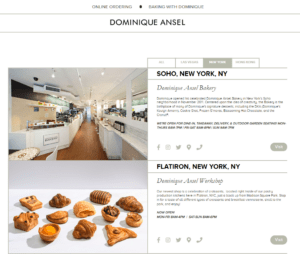
Product quality is the make-or-break factor in customer satisfaction. But how?
Consider Dominique Ansel Bakery. Stepping into this bakery, you’ll be welcomed with the irresistible scent of freshly baked croissants, cronuts, etc. A golden croissant catches your eye, and as you take a bite, its flaky layers melt in your mouth, delivering heavenly flavors. This gives you a delightful customer experience.
The bakery’s unwavering commitment to quality ensures a steady stream of returning customers. Yet, it’s not solely about the product; other elements contribute to crafting remarkable experiences.
Hence, prioritize excellence and allow your products to speak volumes for themselves.
2. Customer Service
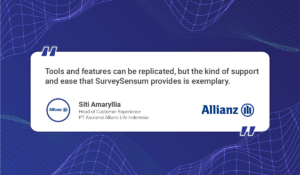
As Allianz Life highlights, while products can be replicated, exemplary service sets you apart. SurveySensum exemplified this with exceptional customer service.
But what does customer service entail, and how crucial is it for satisfaction?
Customer service encompasses the support and interactions provided to customers before, during, and after their purchase. Prioritize it effectively by training your staff, offering omnichannel support, and promptly addressing concerns. This enhances the overall experience, resolves issues swiftly, and fosters unwavering trust and loyalty.
And this can also boost your revenue – 93% of customers are likely to make repeat purchases with companies that provide excellent customer service.
3. Price and Value
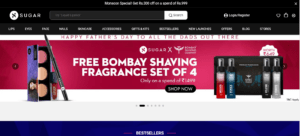
Have you heard of Sugar Cosmetics?
Recently, it has become a go-to brand for makeup lovers.
Why? – Because it offers top-notch quality products at reasonable prices.
This brings us to the influencing factor- Price and value.
Price and value directly refer to the cost of a product in relation to its perceived benefits and worth. Because customers seek value for their money, and finding the right balance between price and perceived benefits greatly influences their satisfaction.
So, you can improve this factor to customer satisfaction by
- offering competitive and transparent pricing policies and
- delivering products to exceed their expectations in terms of features, performance, and durability
4. Convenience and Accessibility
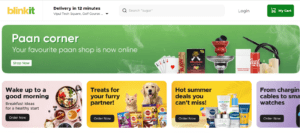
Take Blinkit, for instance. Order groceries and have them delivered in just 20 minutes. That’s the convenience people crave!
Prioritize convenience and accessibility to create a delightful customer experience. Ensure easy discovery, purchase, and use of your product or service. CES surveys can help gauge this.
To enhance this, offer user-friendly websites, intuitive apps, multiple payment options, efficient delivery, and convenient support channels. These factors greatly impact customer satisfaction.
So, prioritize them to meet customer expectations, build relationships, and drive long-term success.
Want to grow like these successful companies? No worries! With SurveySensum you not only get a robust feedback platform but also CX consultation from top CX experts who will help you gather actionable and prioritized data to transform your feedback into revenue.
Next, let’s discuss measuring customer satisfaction.
Different Channels for Measuring Customer Satisfaction
Measuring customer satisfaction requires using diverse channels to gather feedback and gauge customer sentiment effectively.
But which channels? Let’s talk about those.
1. Customer Surveys
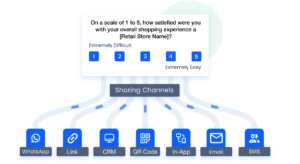
If you want to know how effective your support call was? Just send a post-service CSAT survey!
Customer surveys are the most effective channels to gauge customer satisfaction (which we discussed above). The best part is – that you can launch them directly on your customers’ preferred channels such as Emails, WhatsApp, In-Apps, etc.
All you need to do is find an efficient CSAT software that helps you to send customized surveys, gather omnichannel feedback in one place, analyze that feedback, and give you top trends and sentiments so that you can take action in time.
2. Customer Reviews and Rating
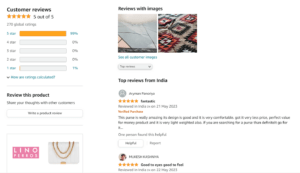
According to KPMG’s The Truth about Customer Loyalty survey, 66% are likely to write a positive online review after a good experience.
So are you listening to these customer reviews and ratings?
If not, then you must because customer reviews and ratings provide authentic feedback directly from customers who have experienced your product or service. These reviews attract and influence the purchasing decisions of other potential customers.
So, how to use customer reviews and ratings?
By actively monitoring and analyzing customer reviews and ratings on popular aggregators and rating platforms. Then you can categorize the feedback, identify recurring views, and track sentiment trends.
Positive reviews can help you identify what is working well, while negative reviews highlight improvement areas.
And, don’t forget to RESPOND to customer reviews.
By responding to them, you show that you really care about what your customers think of you. This will also help you to build a relationship with them, and improve customer satisfaction.
3. Web Analytics
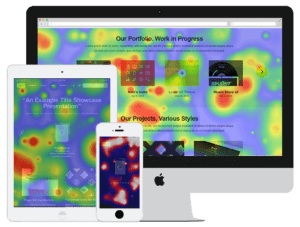
Are you looking to enhance your website’s performance and drive customer satisfaction to new heights?
Web analytics tools hold the key to unlocking valuable insights that can revolutionize your online presence.
With tools like Google Analytics and Hotjar, you can gain a deep understanding of user behavior, uncover pain points, and optimize the customer journey.
Imagine having the power to track metrics like heatmap analysis, that
- visually showcases user engagement
- highlights the most captivating areas of your webpage
- gauges bounce rates,
- reveals the percentage of users who leave your site after viewing just one page, and
- measures session time – indicating how long users spend exploring your site
By harnessing the power of these metrics, you can identify areas where your users face difficulties and take actionable steps to enhance their satisfaction and experience.
4. Social Media Sentiment Analysis & Monitoring
Are you listening to your customers over social media channels?
If not then you must because it directly impacts customer spending.
According to Mckinsey’s Social Media as a Service Differentiator: How to Win report, customers are likely to spend between 20-40% more with companies that quickly resolve their requests on social media. However, those businesses that ignore social experience witnessed a 15% higher churn rate than their responsive counterparts.
Social media offers a vast amount of unfiltered customer feedback, making them invaluable for measuring customer satisfaction. By carefully analyzing sentiment and closely monitoring brand-related conversations, you can gain deep insights, identify emerging trends, and proactively address concerns.
This proactive approach resolves issues swiftly and cultivates a positive brand perception among your customers.
→ Read more on the 6 simple steps of measuring customer satisfaction.
With SurveySensum, take a step further into measuring your customer satisfaction. Request a demo today to get in touch with our CX experts who will help you gather actionable insights and prioritize action to transform feedback into revenue!
Till now we’ve talked about what customer satisfaction is, its importance, types, factors influencing it, and how to measure it along with different channels. Now, you must be wondering about the best time to launch a CSAT survey to measure it, right?
Here you go!
When to Launch the Customer Satisfaction Survey?
To measure and launch customer satisfaction at the best time, you need to map the entire customer journey. This will help you identify the relevant touchpoints which you can take customer feedback from.
Note: The right time and channel for sending the survey also play a vital role in measuring customer satisfaction.
Here are some generic touchpoints where you can measure customer satisfaction.
1. Cart Abandonment Surveys
You can send this survey on the Website and in-app to those customers who abandoned their carts during the purchasing process. With this data, you can uncover potential issues that hinder conversions and improve the overall shopping experience.
→ Here’s an example of a post-purchase survey question – What factors led you to abandon your cart today?
2. Post-Purchase Surveys
Send this survey via email, SMS, or in-app after your customers complete a purchase. So that they can share their satisfaction level with the buying experience, product quality, and overall service.
→ Ask a CSAT question – How satisfied are you with your recent purchase?
3. Customer Support Interaction Surveys
By sending this survey via email or live chat after interacting with your customer support team, prompt your customers to share their experience of that particular interaction. The gathered data from this survey will help you to evaluate the quality of support provided and identify areas for improvement.
→ You can ask a question like this – Based on your recent interaction, how satisfied were you with the assistance you received from our support team?
4. Checkout Surveys
Share this survey with your customers either via kiosk or mobile app immediately after they purchase to gather their online or in-store experience. This survey will provide you with valuable insights into their overall experience and satisfaction.
→ Ask a transactional CSAT question – On a scale of 1 to 10, how satisfied are you with your in-store/online purchase experience today?
5. Website and In-App Feedback Surveys
Integrate in-app feedback surveys on your website or within your mobile app, allowing your customers to provide feedback on their experience, usability, and overall satisfaction.
→ Here’s an example of the question to ask your customers – Was it easy to navigate through our website/app?
Launch any type of customer satisfaction survey in under 5 minutes with SurveySensum’s survey templates with pre-loaded survey questions and customizable options that will match your brand’s identity.
6. Customer Feedback during Service Visits or Appointments (Pre and Post-Meetings/Demos)
Gather feedback from customers before and after service visits or appointments, ensuring you address any concerns promptly and continuously improve your service quality.
→ Questions example for Pre-Meeting – What specific topics or areas would you like us to cover during our upcoming meeting?
→ Questions example for Post-Meeting – Did the meeting address all your concerns?
7. Periodic Customer Satisfaction Surveys
Send this survey via email or SMS to assess overall satisfaction, and loyalty, and identify improvement areas to enhance the customer experience.
→ Ask a periodic customer satisfaction survey question like – How likely are you to recommend our products/services to others?
8. Exit Surveys for Canceled Subscriptions or Contracts
When customers cancel their subscriptions or contracts, send an exit survey to their email or WhatsApp survey. This can help you understand the reasons behind their decision and identify opportunities for retention and improvement.
→ An example of a question to ask is – What led you to cancel your subscription/contract with us?
9. Feedback during Loyalty Program Interactions
You can send this survey through various channels as per your customer’s availability.
By conducting this survey, you let your customers provide feedback during their interactions with your loyalty program. So that you can evaluate the effectiveness of the program and make necessary changes.
→ An example of the question you can ask in this survey is – Are you satisfied with the rewards and benefits offered through our loyalty program?
10. Customer Feedback during Product or Service Trials
Send a trial feedback survey via email or in-app to collect feedback from customers who are currently using a trial version of your product or service. By gathering this survey’s data, it will help you understand their satisfaction and then you can improve conversion rates accordingly.
→ The question to ask in this survey is – How satisfied are you with the trial experience of our product/service?
By measuring customer satisfaction at these critical moments you can gain actionable insights, enhance the customer experience, and foster long-term loyalty.
Learn more about asking the right customer satisfaction survey questions
at different touchpoints here.
Don’t want to spend too much time designing your surveys? Don’t worry! With SurveySensum’s industry-specific survey templates, you don’t have to spend more than 5 minutes in designing and launching surveys!
Now you know at what touchpoint you’ve to send customer satisfaction surveys, it’s time to delve into best practices to improve CSAT scores.
How to Improve Customer Satisfaction? (With Brand Examples)
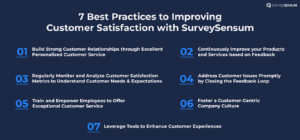
Here’s how you can improve your customer satisfaction with these 7 best practices.
1. Build Strong Customer Relationships through Excellent Personalized Customer Service
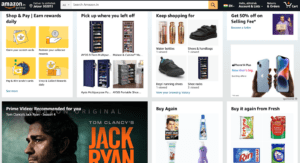
When it comes to cultivating strong customer relationships through personalized service, Amazon shines. Their personalized emails, order updates, and recommendations foster trust and loyalty, elevating the overall customer experience.
You can emulate this success by:
- Gathering data to understand customer needs and preferences for tailored solutions.
- Demonstrating genuine interest in customer concerns and addressing them promptly and empathetically.
- Using customer data to personalize interactions, making customers feel valued.
- Analyzing behavior and purchase history to offer relevant suggestions, exceeding expectations.
- Providing quick and reliable support across various channels, resolving issues satisfactorily.
- Actively seeking and addressing customer feedback.
- Implementing loyalty programs with exclusive perks tailored to customer preferences.
2. Continuously Improve Your Products and Services Based on Feedback

Link Net wanted to improve its network quality by swiftly identifying and resolving issues. However, the challenge lies in accurately determining the number of affected customers in a specific area. And customer satisfaction ratings alone didn’t give a comprehensive picture.
So, what did they do?
They found the solution → SurveySensum.
With SurveySensum, they:
- Boosted customer satisfaction by 35%
- Saved 24 hours monthly on analysis
- Obtained real-time feedback through data analysis
- Swiftly identified and resolved network issues
How? SurveySensum allowed them to:
- Analyze internal network data
- Augment information with insights into customer behavior and network performance
- Group customers by fiber nodes to pinpoint affected areas
Additionally:
- Customizable dashboard for tailored customer satisfaction reports
- Instant alerts for quick response to negative feedback
Build stronger customer relationships by understanding your customer sentiment and expectations better with SurveySensum’s CX consultation. Get ready to transform your feedback into revenue!
3. Regularly Monitor and Analyze Customer Satisfaction Metrics to Understand Customer Needs and Expectations
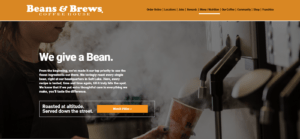
Bean & Brew understands the importance of monitoring customer satisfaction metrics to evolve with customer needs. Through surveys and social media listening, they uncover desires for more variety, a cozy atmosphere, and friendly service.
Armed with these insights, Bean & Brew introduces new flavors, revamps seating, and invests in staff training. Customers notice the improvements, deepening their connection to the brand.
By prioritizing customer satisfaction metrics, Bean & Brew ensures each sip brings joy to their customers.
Suggested Read: Quick Tips to Create a Customer Satisfaction Strategy
4. Address Customer Issues Promptly by Closing the Feedback Loop
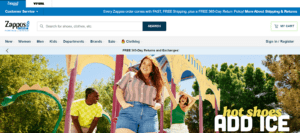
Let’s understand how addressing customer issues promptly by closing the feedback loop can have a profound impact.
Zappos exemplifies exceptional customer service by promptly addressing customer issues and closing the feedback loop.
When customers voice concerns, Zappos actively listens and empathizes, providing timely updates on issue resolution progress. By exceeding expectations, Zappos turns negative experiences into positive ones.
To adopt this practice, utilize tools like SurveySensum’s real-time ticketing management for instant alerts and proactive action.
5. Train and Empower Employees to Offer Exceptional Customer Service
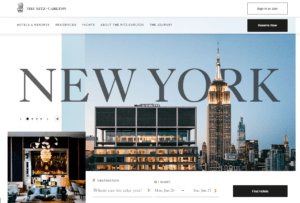
Ritz-Carlton stands out in this regard by investing in staff training and empowerment.
They trust their team to make on-the-spot decisions, prioritizing customer satisfaction without constant approval. This fosters an environment where employees are eager to go above and beyond.
Through this commitment to training and empowerment, Ritz-Carlton has established a brand synonymous with exceptional service.
6. Foster a Customer-Centric Company Culture

Nordstrom epitomizes a customer-centric culture where employees understand their core mission: creating extraordinary experiences for customers. This mindset permeates the entire organization, making customer satisfaction a shared mission.
But how can you foster a customer-centric culture?
- Empower employees to prioritize customer satisfaction through decision-making.
- Recruit individuals with innate customer service skills like empathy and attentiveness.
- Invest in training and development programs to enhance employees’ customer service skills continually.
- Actively solicit and utilize customer feedback to drive improvements.
- Reinforce a shared mission and values centered on delivering exceptional customer service.
By implementing these strategies, you can cultivate a customer-centric culture that sets your business apart and fuels its growth.
7. Leverage Tools to Enhance Customer Satisfaction
Harnessing CSAT tools like SurveySensum, Hootsuite, Inspectlet, and Google Analytics aligns your strategies with customer expectations, cultivates strong relationships, and provides valuable insights for enhancing satisfaction and experiences.
How?
Here are some examples of great tools that can help you boost the satisfaction levels of your customers.
- SurveySensum SurveySensum facilitates feedback collection and analysis, enabling swift issue resolution.
- Hootsuite conducts social media sentiment analysis to gauge customer perceptions.
- Inspectlet offers web analytics, optimizing website usability through heatmaps and session data.
- Google Analytics provides comprehensive website and app performance analysis, revealing valuable customer behavior insights.
By leveraging these tools, you can consistently enhance your business, meet customer needs effectively, and deliver exceptional experiences that foster loyalty and satisfaction.
→ Read more on customer satisfaction best practices.
Now, implementing these best practices to improve customer satisfaction needs the help of a robust CSAT software, right?
Why You Should Use Customer Satisfaction Measurement Tools
Using customer satisfaction measurement tools aids businesses to effectively gauge, track, and improve customer satisfaction levels, and here’s how these tools help you and what features you should be looking out for.

1. Built-in Survey Templates: Look for tools with built-in templates that streamline the feedback collection process, making it quick and hassle-free for both customers and your team. It also encourages higher response rates, providing you with a more comprehensive understanding of customer sentiments.

2. Omnichannel Survey Sharing: Your customers can be anywhere. They might be on WhatsApp or email or only interacting via text messages. So, in the digitalized era, it is more than important that you meet your customers where they are. This is where CSAT software helps you. With multiple survey-sharing channels, you can send surveys via any channel at the same time.

3. Feedback Analysis: By regularly measuring customer satisfaction with Text Analytics software feature, you can automate the process of identifying specific areas where you are excelling and areas where you need improvement. This feedback is invaluable for prioritizing initiatives and allocating resources to address areas of weakness.

4. Dashboard & Reporting: Choose a tool with Intuitive dashboards and reporting functionalities that provide clear, concise visualizations of key metrics and trends. This allows you to tailor reports to your specific needs and preferences.
Visulaize your data better with SurveySensum’s analytical and in-depth survey dashboard and reporting capabilities.
5. Trend Analysis: Customer satisfaction measurement tools allow you to track your performance over time and monitor trends in customer satisfaction levels. This longitudinal data provides insights into the effectiveness of strategies and initiatives implemented to enhance the customer experience.

6. Real-time Ticketing System to Close the Loop: Gathering feedback yields results and drive your business growth only when you actually work on the feedback and resolve your customer’s issues. So, look for a tool that comes with real-time ticketing management. The system will trigger an alert when negative feedback comes in, assign the ticket to an agent, set an SLA, and close the feedback loop with the customer. streamlines communication and ensures timely resolution of customer issues.
7. CSAT-Driven ROI: Customer satisfaction is directly linked to business success and profitability. So, look for a tool that guides your efforts with end-to-end implementation support and consultation and helps you prioritize efforts that drive tangible business outcomes.
→ Here are a few tips to create an effective customer satisfaction strategy.
Conclusion
With this quintessential customer satisfaction guide, you now know what changes are required to do in your business to achieve success while maintaining a competitive edge.
So, focus on creating a customer-centric culture to keep an eye on it and continuously improve your CSAT score by analyzing customer satisfaction data. And this is where SurveySensum can help you out.
With SurveySensum’s CSAT software, you can create dynamic surveys, automate multi-channel survey distribution to gain real-time insights into customer expectations, and close the feedback loop in time.
Frequently Asked Questions
Customer satisfaction refers to the degree of contentment that a customer experiences after interacting with a company’s products, services, or overall brand experience. It reflects whether a customer’s expectations have been met, exceeded, or fallen short.
A good level of customer satisfaction typically means that the majority of customers are satisfied or highly satisfied with their experiences. While specific benchmarks may vary by industry and business, a common measure of good customer satisfaction is achieving a high NPS or CSAT.
Customer satisfaction is important because it directly impacts business success and profitability. Satisfied customers are more likely to remain loyal, make repeat purchases, and recommend the company to others, leading to increased revenue and growth. Additionally, high levels of customer satisfaction contribute to positive brand reputation, competitive advantage, and long-term sustainability.
The five basic levels of customer satisfaction are often categorized as follows:
- Very Satisfied: Customers who are highly pleased with their experience.
- Satisfied: Customers whose expectations have been met.
- Neutral: Customers who have no strong feelings either way.
- Dissatisfied: Customers who are not happy with their experience.
- Very Dissatisfied: Customers who are extremely unhappy with their experience.
True. In the service industry, customer satisfaction is often influenced by customers’ perceptions of the service they receive. This perception can be shaped by various factors, including the quality of interactions with employees, the responsiveness of customer support, and the overall experience of using the service.
Organizations can improve customer satisfaction by:
- Collecting and analyzing customer feedback to identify areas for improvement.
- Investing in employee training to enhance customer service skills.
- Streamlining processes and reducing friction points in the customer journey.
- Personalizing interactions and offering tailored solutions to meet individual customer needs.
- Monitoring and measuring customer satisfaction metrics regularly to track progress and make adjustments as needed.






